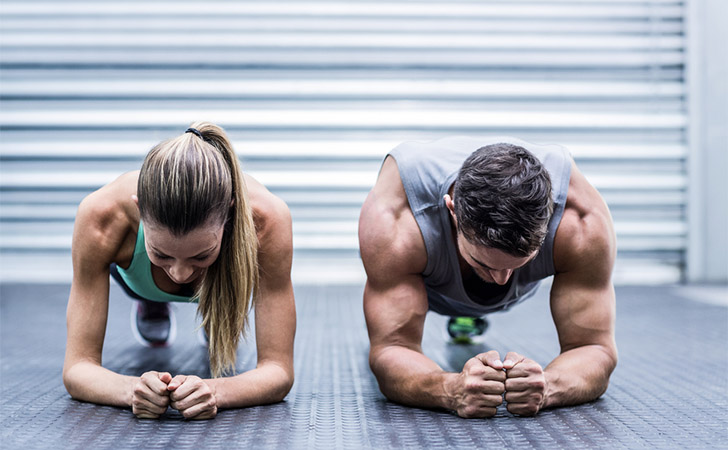Exercised to Improve Bone Strength
Bones may seem like an inanimate object that just exists to hold our bodies together. But in reality our bones are living organisms that change shapes and grows throughout the course of our lives. Most of this shaping is the result of forces which pull, press and twist the skeleton as we move.
The biggest of these forces is caused by our muscles. During movement, bones experience a huge amounts of force. For example, when a triple jumper’s heels hit the ground, the force is approximately 15 times their actual body weight — or the weight of a small sedan. In fact, because muscles attach very close to the joints normally, muscular forces are much greater than these impact forces. Similar to the way that you have to push harder to lift someone on a see-saw the closer you get to the middle of it.
As a result of this, bones also experience a great impact and muscle force during daily mundane tasks, totaling more than five times body weight. These forces bend, squash and twist bones. The shin bone, for example, briefly becomes nearly a millimeter shorter as your foot hits the ground when running. The bone is able to sense small changes, and can grow astronomically — in the months after starting daily exercise — in order to reduce the risk of breaking. Another example, the racket arm bones of a tennis player can be 20 percent thicker and contain 40 percent more bone mineral than their other arm. And sprint runners have up to a third more bone in their shin bone than people who don’t regularly exercise.
And while exercise is great, not all exercise gives us strong bones. There seems to be a need for high impacts (striking a tennis ball, or hitting the floor from a jump) in order to produce a big enough muscle and impact forces to make our bones change. Swimmers and cyclists may have very healthy muscles, lungs, and hearts but their bones are not much different from people who don’t exercise. The response bone’s have to these forces greatly vary along its length. Near the joints, bones get denser and bigger, whereas bone shafts tend to get thicker and bigger with very little change in bone density. Bones can also change in shape. The shin bone shaft begins as a circular tube, but tends to get wider from front to back as we develop and start to move until the shin forms a tear-drop shape.
Beginning exercise early on in life can ensure strong bones for the rest of your life. Children who start to walk early have up to 40 percent more bone in their shins than children who start later; these effects usually last until their late teen years. This is very important as stronger, bigger bones are less likely to break as we age. Of course, exercise trials can be effective in making children’s bones stronger, and also in reducing severe bone loss due to bed rest or spinal cord injuries. Continuous work is giving us a much better picture of how forces transform our bones during various movements. This will enable us to design more effective exercises for strong bones in different age groups. And healthy, strong bones are vital for a healthy, strong life.
Trending Articles
How to Manage God-Given Curly Hair
Your eye color is suddenly translucent, cheeks are flushed, there is soft rosy halo around your lash line, and your lips…your lips deepen as blood rushes through them and creates a beautiful, tragic look. This lip happens to work well for day or evening and doesn’t require you to cry! Read More…
Dangerous Cleaning Products to Be Removed
You’d figure that consumer safety regulations have your back, right? In reality, companies that develop household products have very few labeling requirements and don’t need to disclose their ingredients. For chemicals in non-edible consumer goods, the motto is ‘innocent until proven guilty.’ The Toxic Substance Control Act is structured so that there must be solid proof of a new chemical’s negative effects Read More…
What to Do When You Are Overwhelmed
Three straight days of colonic irrigations. Five straight days of eating nothing but watermelon. Eight straight days of consuming nothing but puréed carrots and chicken broth. Eleven straight days of juice cleansing. One hundred and eighty straight days of water, raw fruits and vegetables, and nothing else. I’ve done all of these things and many, many more that would leave a lot of people scratching their heads.Read More…





